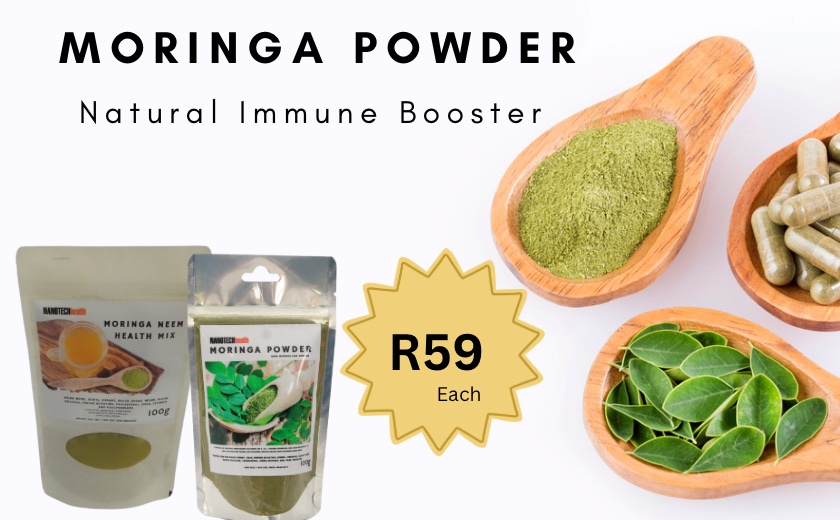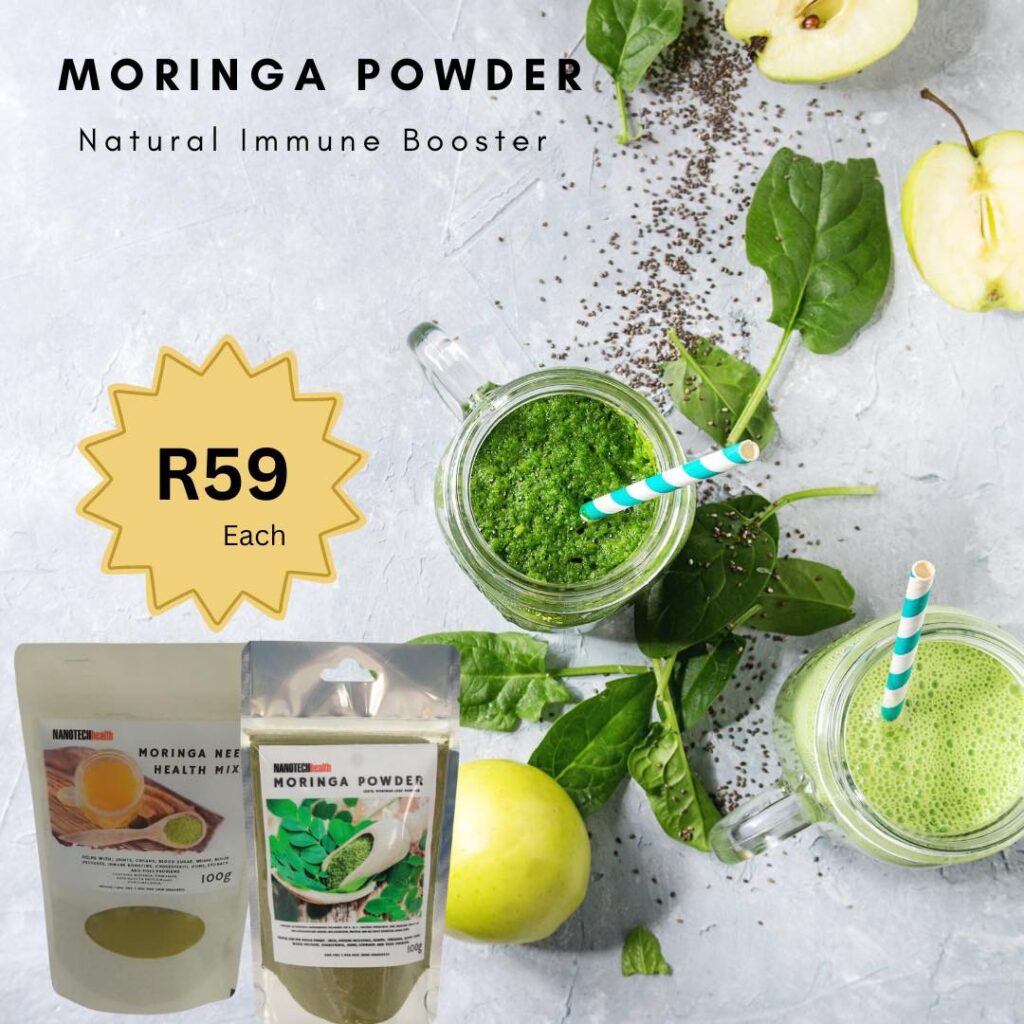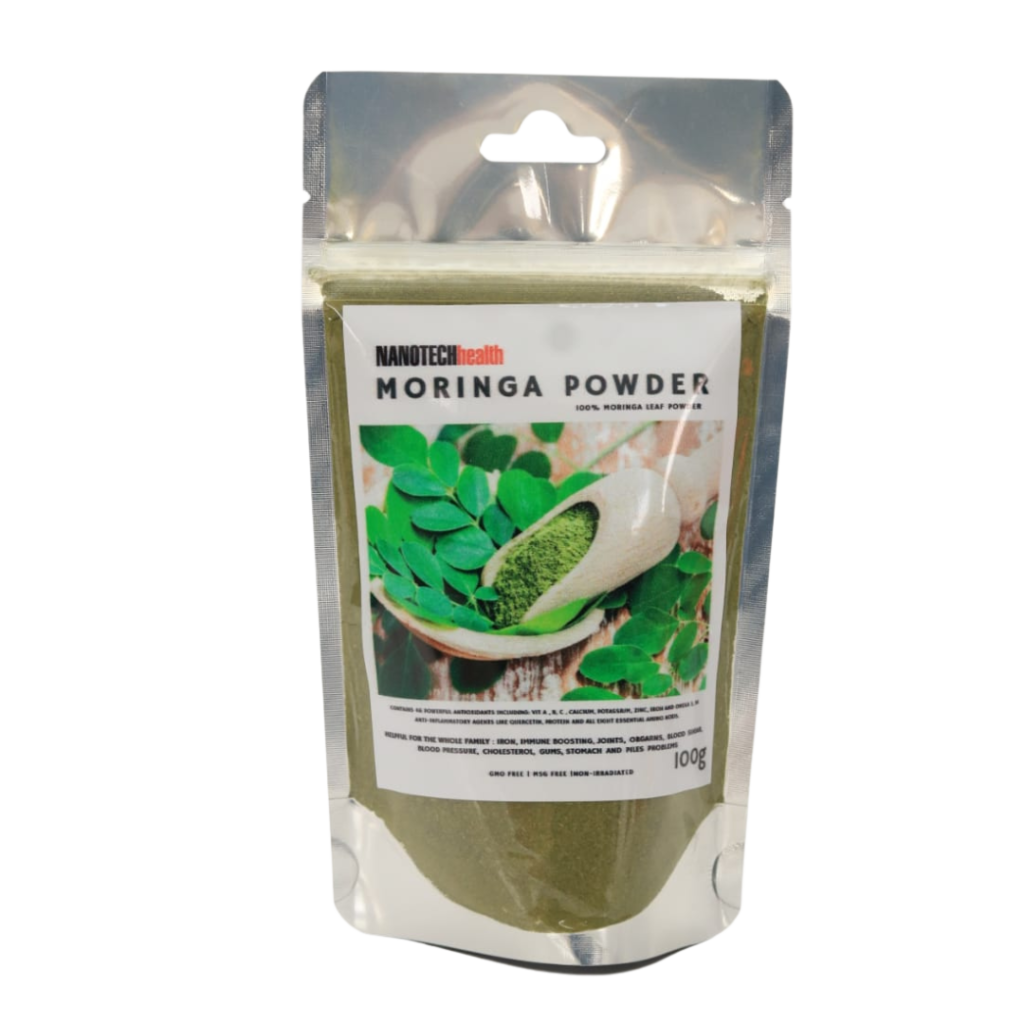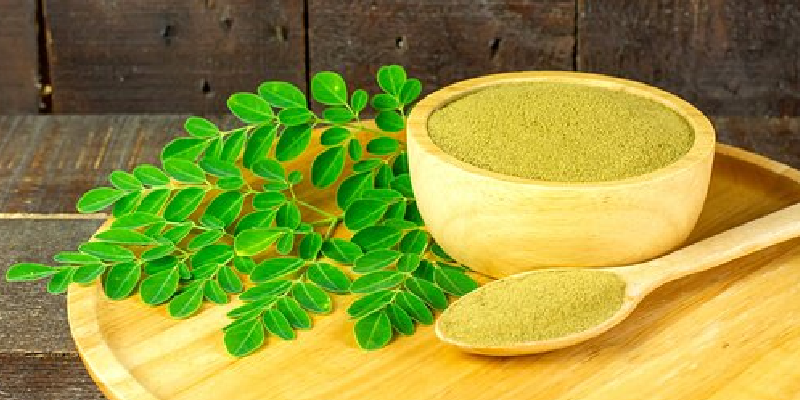Moringa, a treasure trove of nutrition and health benefits, is fast gaining popularity. But do you know all the remarkable benefits it offers? Some might just surprise you!
Table of Contents
Introduction
Miraculous moringa benefits have you ever heard of, That sound good to be true however have you ever heard about the miracle tree that is shaking up the health world? We are talking about Moringa, a plant that hails from India, Pakistan, and Nepal, and is now cultivated worldwide for its plethora of benefits. Many call it the ‘drumstick tree’ or the ‘horseradish tree’. In this blog post, we will unveil 10 benefits of Moringa that you probably haven’t heard of yet. So, are you ready to dive into the sea of knowledge and discover the hidden treasures of Moringa?
1. A Natural Water Purifier
One of the lesser-known yet fascinating benefits of Moringa is its capability to act as a natural water purifier. This property is not just impressive, but it can also have a colossal impact on communities worldwide, especially in areas where access to clean drinking water is a challenge. But how exactly does Moringa accomplish this feat? Let’s dive into the nitty-gritty:
Moringa Seeds to the Rescue
Moringa seeds are the heroes in this story. These tiny seeds are packed with proteins that have coagulating properties. When Moringa seed powder is added to water, these proteins bind with the impurities and particulates suspended in the water. This process is called coagulation.

The Process of Purification
Here’s a more detailed look at the purification process:
- Harvesting Seeds: Moringa seeds are harvested from the pods of the Moringa tree. These seeds are then removed from their shells.
- Creating Seed Powder: The seeds are dried and then ground into a fine powder.
- Application to Water: This Moringa seed powder is then added to the murky water. It’s important to use the right amount of seed powder, which is usually dependent on the turbidity or cloudiness of the water.
- Coagulation: As mentioned earlier, the proteins in the Moringa seed powder bind to the impurities in the water. These impurities then start to clump together.
- Sedimentation: Once the impurities are clumped together, they become heavy and begin to settle at the bottom of the water container. This process is known as sedimentation.
- Decantation and Filtration: The clear water can then be carefully removed or decanted from the top, leaving the impurities behind. For added safety, the water can also be passed through a cloth filter.
- Disinfection: It’s important to note that while Moringa seeds are effective in removing particulates, they do not remove microbial contaminants. Therefore, it is advisable to use additional methods such as boiling or chemical disinfection to ensure that the water is safe to drink.
A Sustainable Solution
What makes Moringa’s water purifying property even more astounding is its sustainability. Moringa trees are drought-resistant and can be grown in many parts of the world. This makes them an incredibly accessible and renewable resource for water purification.
A Boon for Developing Regions
For developing regions with limited access to clean water, Moringa’s water purification properties can be life-changing. Not only does this method help in making water clearer and more pleasant to drink, but when coupled with disinfection, it can also contribute to reducing waterborne diseases.
2. Anti-Cancer Properties
Cancer, a word that sends shivers down one’s spine, is one of the leading causes of death worldwide. The global quest for finding effective ways to prevent and treat cancer is an ongoing endeavor. This is where Moringa, the wondrous tree, comes into play with its anti-cancer properties. But how exactly does Moringa help in the fight against cancer? Let’s unravel the science behind this.
Phytochemical Powerhouses
Moringa leaves, seeds, and bark are packed with phytochemicals. Phytochemicals are naturally occurring compounds in plants that have health-promoting properties. Some of these phytochemicals have been found to be potent in fighting against cancer cells. The main compounds in Moringa that contribute to its anti-cancer properties include:
- Isothiocyanates: These compounds are potent inhibitors of cancer cell growth and have shown effectiveness in reducing the risk of various types of cancer, including lung, colon, and breast cancers.
- Quercetin: A powerful antioxidant, Quercetin is known to inhibit the growth of cancer cells and induce apoptosis (the process where cancer cells self-destruct).
- Niazimicin: This is another compound found in Moringa that has been identified as a potent cancer preventive agent.
Mechanism of Action
Moringa’s anti-cancer properties are exhibited through several mechanisms:
- Antioxidant Activity: Moringa is rich in antioxidants, which help in neutralizing free radicals in the body. Free radicals can cause oxidative stress, which is linked to the development of cancer. By reducing oxidative stress, Moringa can help in lowering the risk of cancer.
- Inhibition of Cancer Cell Proliferation: The compounds in Moringa can inhibit the growth and multiplication of cancer cells. This is crucial in preventing the spread of cancer to other parts of the body.
- Induction of Apoptosis: Moringa can induce apoptosis in cancer cells. Apoptosis is essentially a programmed cell death. When cancer cells undergo apoptosis, they essentially self-destruct, which is vital in controlling the progression of cancer.
- Anti-inflammatory Properties: Chronic inflammation is associated with the development of cancer. Moringa has anti-inflammatory properties which may help in reducing the risk of cancer.
Practical Application and Research
While the anti-cancer properties of Moringa are promising, it’s important to recognize that most of the research has been conducted in laboratories or on animals. There is a need for more extensive human clinical trials to fully understand the effectiveness and potential applications of Moringa in cancer prevention and treatment.
Moreover, Moringa should be viewed as a supplementary measure and not as a standalone cure for cancer. It can be a part of a holistic approach to health and cancer prevention.
Incorporating Moringa in Your Diet
Moringa can be incorporated into your diet through various means, such as Moringa leaf powder, capsules, or even using the fresh leaves in cooking. However, it’s important to consult a healthcare professional before incorporating Moringa or any supplement, especially for individuals undergoing cancer treatment, as there can be interactions with medications.

3. Enhancing Wound Healing
Wound healing is an essential physiological process that helps the body repair itself after an injury. While the body is usually efficient at repairing wounds, certain factors such as age, underlying health conditions, and nutritional deficiencies can slow down the healing process. Moringa, often referred to as the “miracle tree”, comes into play as a natural aid to enhance wound healing. Let’s delve into how Moringa aids in this process:
Components of Moringa that Facilitate Wound Healing
Moringa is rich in various compounds that contribute to its wound healing properties:
- Vitamin C: Moringa is a rich source of Vitamin C, which is vital for the production of collagen, a protein that plays a crucial role in the formation of new skin during the wound healing process.
- Vitamin A: This vitamin is essential for the development of epithelial cells, which form the outer layer of the skin. It also has anti-inflammatory properties that can aid in faster healing.
- Vitamin E: Known for its antioxidant properties, Vitamin E can protect the wound from oxidative damage, thereby aiding in the healing process.
- Zinc: Moringa contains zinc, which plays a vital role in wound healing by promoting the proliferation of skin cells.
- Anti-inflammatory compounds: Moringa has anti-inflammatory properties due to the presence of compounds like isothiocyanates. These compounds can reduce inflammation around the wound, leading to faster healing.
- Antimicrobial Agents: Moringa possesses antimicrobial properties, which can protect the wound from bacterial infections, a common complication that can hinder the healing process.
The Stages of Wound Healing
To understand how Moringa enhances wound healing, it’s important to be aware of the stages involved in the healing process:
- Hemostasis: This is the first stage where blood clotting occurs to stop the bleeding.
- Inflammation: At this stage, the body sends white blood cells to the wound to fight infections and clear debris.
- Proliferation: This involves the rebuilding of new tissue, where collagen plays a significant role.
- Remodeling: Finally, the new tissue remodels itself to become stronger.
Moringa predominantly aids in the proliferation stage by promoting collagen synthesis due to its Vitamin C content. Its anti-inflammatory properties help in the inflammation stage, while its antimicrobial properties provide protection against infections.
Utilizing Moringa for Wound Healing
Moringa can be used in various forms to aid wound healing:
- Moringa Leaf Powder: This can be ingested as a supplement or used as an ingredient in meals.
- Moringa Oil: Also known as Ben oil, this can be applied topically on the wound. Moringa oil is especially known for its skin rejuvenation properties.
- Moringa Leaf Extract: Sometimes used in creams and ointments, this extract can be applied to the wound for faster healing.
Precautions and Consultation
While Moringa is a natural product, it’s essential to use it judiciously. When ingesting Moringa, especially in supplement form, it’s important to adhere to recommended dosages. For topical applications, ensure that you’re not allergic to Moringa by doing a patch test.
Moreover, it’s always wise to consult a healthcare professional before incorporating any new supplements or products, especially for wound healing, as there might be specific medical considerations to take into account.
4. Fighting Malnutrition
Malnutrition is a global issue that affects millions of people, particularly in developing countries. It encompasses both undernutrition, which includes stunting (low height for age), wasting (low weight for height), and micronutrient deficiencies, as well as overnutrition such as obesity and related issues. In this segment, we will focus on how Moringa, the mighty “miracle tree,” can be a game-changer in combating undernutrition and micronutrient deficiencies.
A Nutrient Powerhouse
Moringa oleifera, often simply referred to as Moringa, is an exceptionally nutrient-dense plant. Its leaves, in particular, are loaded with vitamins, minerals, and essential amino acids. Here’s a snapshot of what Moringa brings to the table:
- Vitamins: Moringa leaves are rich in vitamins A, C, and E, all of which are essential for overall health. Vitamin A is crucial for vision and immune function, vitamin C is an antioxidant that also plays a role in immune function, and vitamin E protects cells from oxidative damage.
- Minerals: Moringa is an excellent source of minerals like calcium, iron, potassium, and magnesium. For example, gram for gram, Moringa leaves contain more iron than spinach, making it a valuable resource in combating iron deficiency anemia.
- Proteins: Moringa leaves are relatively high in protein and contain all the essential amino acids, which is somewhat rare for a plant source. This is particularly significant for vegetarian and vegan diets.
- Antioxidants: Packed with various antioxidants, Moringa helps combat oxidative stress, which is linked to chronic diseases.
Implementing Moringa in Malnutrition Interventions
The application of Moringa in fighting malnutrition can be quite versatile. Here are some ways in which Moringa can be incorporated:
- Moringa Powder: Dried Moringa leaves can be ground into a fine powder. This powder can be added to soups, stews, or sprinkled over meals. It is an easy and efficient way to enrich food with nutrients.
- Moringa Tea: Drinking tea made from Moringa leaves or Moringa powder can be a gentle way to introduce these nutrients, especially in communities not used to the taste of Moringa.
- Moringa Porridge: Mixing Moringa powder with local grains to make porridge can be an excellent nutrient-rich meal, especially for children.
- Fresh Moringa Leaves: When available, fresh Moringa leaves can be used much like spinach or kale, and can be added to various dishes.

Moringa for Maternal and Child Health
Moringa holds particular promise for maternal and child health. Pregnant and lactating women, as well as young children, are especially vulnerable to malnutrition. Incorporating Moringa into the diets of pregnant and lactating women can help ensure that they receive essential nutrients, which, in turn, is crucial for the growth and development of their children.
A Sustainable Solution
One of the key advantages of Moringa is its sustainability. Moringa trees are hardy and can grow in a variety of climates, including arid regions where malnutrition is often most rampant. This makes Moringa cultivation a sustainable way to combat malnutrition locally.
Words of Caution
While Moringa is a nutritional powerhouse, it should be part of a varied diet. Relying solely on Moringa for nutrition is not advisable. Moreover, it is important to consume Moringa in moderate quantities, as excessive consumption could have side effects. Additionally, in certain conditions, such as pregnancy, it’s crucial to consult a healthcare provider regarding the appropriate use of Moringa.
5. Anti-Aging Properties
Do you want to keep the ravages of time at bay? Moringa might be your secret weapon! Rich in antioxidants and compounds that boost collagen production, it can enhance skin elasticity and reduce wrinkles. Who doesn’t want a youthful glow?
6. Natural Birth Control
In an era where the conscious choice regarding family planning is increasingly important, many individuals and couples are seeking alternatives to conventional hormonal contraceptives. Natural birth control methods are an alternative for those who want to avoid or minimize synthetic hormones and other interventions. Let’s dive into the world of natural birth control, including an intriguing role Moringa can play.
Fertility Awareness-Based Methods
One of the most common natural birth control methods is based on fertility awareness. This involves tracking your menstrual cycle to identify the days you are most fertile and avoiding intercourse or using a barrier method during this time. Here are a few techniques:
- Basal Body Temperature Method: This involves taking your temperature every morning before getting out of bed and noting slight increases which may indicate ovulation.
- Cervical Mucus Method: This requires monitoring changes in cervical mucus throughout the menstrual cycle. During ovulation, the mucus typically becomes clear and stretchy.
- Symptothermal Method: Combines both basal body temperature and cervical mucus tracking for more accuracy.
- Calendar Method: Involves tracking your menstrual cycles on a calendar and calculating your fertile days based on the length of your previous cycles.
Barrier Methods
Another way to practice natural birth control without the use of hormones is through barrier methods:
- Condoms: Condoms, both male and female versions, prevent sperm from reaching the egg. They also have the added benefit of reducing the risk of sexually transmitted infections (STIs).
- Diaphragms and Cervical Caps: These are placed inside the vagina to cover the cervix, preventing sperm from entering the uterus.
- Spermicide: This is a chemical product that deactivates sperm and is often used in conjunction with diaphragms or cervical caps.
Withdrawal Method
Also known as the pull-out method, it involves withdrawing the penis from the vagina before ejaculation. This method can be unreliable as it relies heavily on timing and self-control.
Lactational Amenorrhea Method (LAM)
For new mothers, exclusive breastfeeding can act as a natural birth control method. When a woman exclusively breastfeeds, the hormonal changes often suppress ovulation. However, this method is only effective for up to six months postpartum and if the mother is exclusively breastfeeding.
Moringa as Natural Birth Control
Moringa has traditionally been used in some cultures as a natural contraceptive. Research has indicated that the aqueous extract of Moringa seeds may have contraceptive effects. It’s believed that Moringa affects the implantation process, and therefore, prevents pregnancy. However, it’s crucial to understand that research in this area is limited and not well-established. Moreover, the efficacy and safety of using Moringa as a contraceptive have not been thoroughly studied.
Considerations and Precautions
While natural birth control methods can be effective if used correctly, they generally have a higher failure rate compared to hormonal contraceptives. Additionally, with the exception of condoms, these methods do not provide protection against STIs.
If you are considering using Moringa or any other natural method for birth control, it’s crucial to consult with a healthcare provider. Understanding the risks, benefits, and proper use of these methods is key to making informed decisions regarding family planning.
7. Combatting Sleep Disorders
Combatting Sleep Disorders
In our fast-paced modern world, sleep disorders such as insomnia, sleep apnea, restless leg syndrome, and circadian rhythm disorders are becoming increasingly common. Poor sleep can have detrimental effects on physical health, mental well-being, and overall quality of life. Thankfully, there are several strategies and remedies for combatting sleep disorders. Let’s explore them in detail.
Understanding the Root Causes
Before delving into strategies to combat sleep disorders, it is crucial to understand their underlying causes. Some common causes include:
- Stress and Anxiety: Chronic stress and anxiety often lead to sleep disturbances.
- Medical Conditions: Certain medical conditions such as chronic pain, respiratory problems, or hormonal imbalances can cause sleep disorders.
- Lifestyle Factors: Consuming caffeine or alcohol, engaging in stimulating activities before bed, and irregular sleep schedules can contribute to sleep disorders.
- Environmental Factors: A non-conducive sleep environment such as a noisy room, bright lights, or an uncomfortable mattress can affect sleep.
- Genetic Predisposition: Genetics can play a role in certain sleep disorders like insomnia and sleep apnea.
Lifestyle Modifications
Making certain lifestyle changes can have a significant impact on sleep quality:
- Regular Sleep Schedule: Go to bed and wake up at the same time every day, even on weekends. Consistency reinforces your body’s sleep-wake cycle.
- Create a Comfortable Sleep Environment: Ensure your bedroom is conducive to sleep by keeping it cool, dark, and quiet. Invest in a comfortable mattress and pillows.
- Limit Exposure to Screens: The blue light emitted by phones, tablets, and computers can interfere with your sleep. Try to avoid these screens for at least an hour before bed.
- Be Mindful of What You Eat and Drink: Avoid large meals, caffeine, and alcohol before bed.
- Regular Physical Activity: Engage in regular physical activity during the day, but avoid vigorous activity close to bedtime.
Relaxation Techniques
Stress and anxiety are common causes of sleep disorders. Here are some relaxation techniques that can be beneficial:
- Deep Breathing Exercises: Practicing deep breathing can help to calm the mind and prepare the body for sleep.
- Progressive Muscle Relaxation: Gradually tensing and then relaxing each muscle group in your body can help to relieve tension and promote sleep.
- Mindfulness Meditation: Focus on being present and observing thoughts and sensations without judgment.
- Visualization: Imagine a peaceful, restful place or experience. Focus on how relaxed this makes you feel.
Herbal Remedies
Some individuals find relief from sleep disorders through herbal remedies:
- Chamomile Tea: Known for its relaxing properties, drinking chamomile tea before bed can help to promote sleep.
- Valerian Root: Available in the form of a supplement, valerian root has been used traditionally to treat insomnia.
- Lavender: The scent of lavender is known for its calming effects. Try using lavender essential oil in a diffuser in your bedroom.
- Magnesium-Rich Foods: Consuming foods high in magnesium, such as nuts, seeds, and leafy green vegetables, can improve sleep quality.
Professional Help
In some cases, sleep disorders might not improve despite trying various remedies. In such situations, it’s important to seek professional help:
- Consult a Doctor: A doctor can help identify any underlying medical conditions that might be affecting sleep.
- Sleep Specialist Referral: Your doctor might refer you to a sleep specialist for specialized testing such as a sleep study.
- Cognitive Behavioral Therapy for Insomnia (CBT-I): This is a structured program that helps you identify and replace thoughts and behaviors that cause or worsen sleep problems with habits that promote sound sleep.
- Medication: In some cases, medication might be necessary to treat sleep disorders. This should always be under the supervision of a healthcare professional.
Moringa and Sleep
While Moringa is typically associated with its energizing effects due to its rich nutrient profile, it also contains certain compounds that can be beneficial for sleep. Moringa leaves are rich in tryptophan, an amino acid that is important for the production of serotonin, which is a precursor to the sleep hormone melatonin. Additionally, the high content of vitamins, minerals, and antioxidants in Moringa can contribute to overall health and well-being, which can indirectly improve sleep quality.
8. Shield Against Liver Damage
The liver is one of the most vital organs in the human body, playing a central role in metabolism, detoxification, and digestion. Protecting the liver from damage is crucial for overall health. In this segment, we will discuss the different causes of liver damage and how to shield the liver from these harmful factors, including the remarkable role that Moringa can play.
Understanding the Causes of Liver Damage
To effectively shield against liver damage, it’s essential to understand its common causes:
- Alcohol Consumption: Excessive alcohol intake is one of the leading causes of liver damage, leading to conditions such as fatty liver, alcoholic hepatitis, and cirrhosis.
- Non-Alcoholic Fatty Liver Disease (NAFLD): This is a condition where fat accumulates in the liver due to reasons other than alcohol, such as obesity and high blood sugar.
- Medications and Toxins: Certain medications, especially when taken in high doses, and exposure to environmental toxins can cause liver damage.
- Infections: Hepatitis viruses, especially hepatitis B and C, can cause inflammation and damage to the liver.
- Autoimmune Disorders: In some cases, the body’s immune system attacks liver cells, causing inflammation and liver damage.
Implementing Protective Strategies
Now that we are familiar with the causes, let’s discuss how to shield the liver from damage:
- Moderate Alcohol Consumption: Limiting or avoiding alcohol can significantly reduce the risk of liver damage.
- Healthy Diet and Exercise: Adopting a balanced diet and engaging in regular physical activity can help in preventing obesity and reducing the risk of NAFLD.
- Avoiding Unnecessary Medications and Supplements: Be cautious with medications, especially pain relievers like acetaminophen, and avoid unnecessary supplements that can be harmful to the liver.
- Get Vaccinated and Practice Safe Hygiene: Getting vaccinated against hepatitis A and B and practicing safe hygiene can reduce the risk of viral infections that cause liver damage.
- Regular Check-ups: Regular medical check-ups can help in early detection and management of liver diseases.
Moringa: A Natural Shield Against Liver Damage
Moringa oleifera, often referred to as the miracle tree, has been found to have hepatoprotective properties – meaning it can help to protect the liver from damage.
- Rich in Antioxidants: Moringa is packed with antioxidants such as quercetin and chlorogenic acid. Antioxidants help in neutralizing free radicals that can cause cellular damage, including liver cells.
- Anti-inflammatory Properties: The anti-inflammatory properties of Moringa can help in reducing liver inflammation, which is often associated with various liver disorders.
- Restoration of Liver Enzymes: Studies have shown that Moringa can normalize liver enzymes, which are crucial in detoxification, fat metabolism, and other liver functions.
- Reducing Liver Fibrosis: Some studies have suggested that Moringa can reduce liver fibrosis, a condition where excess fibrous tissue builds up in the liver, often as a result of chronic inflammation.
Using Moringa for Liver Protection
Incorporating Moringa into your diet can be done through various means, such as adding Moringa powder to your smoothies, soups, or dishes, consuming Moringa tea, or taking Moringa supplements.
A Word of Caution
While Moringa has promising benefits in protecting the liver, it’s important to use it as a part of a holistic approach to liver health and not as a sole remedy. Additionally, consult your healthcare provider before using Moringa, especially if you have existing liver conditions or are on medication.
9. Natural Preservative: The Unsung Hero in Food Storage
In an age where people are becoming increasingly health-conscious, the demand for natural and minimally processed food products is on the rise. One significant aspect of this movement is the shift towards using natural preservatives instead of synthetic ones. But what exactly are natural preservatives, and why are they important? Let’s dive deep into the world of natural preservatives, and unveil their significance in food safety and extending shelf life.
What are Natural Preservatives?
Natural preservatives are substances derived from natural sources such as plants, animals, or minerals. They are added to food products to prolong shelf life by inhibiting the growth of microorganisms, or by protecting against oxidation which can lead to rancidity and color changes.
The Mighty World of Natural Preservatives
There is a range of natural preservatives, each serving a specific purpose. Let’s explore some of the most common ones:
- Salt: For centuries, salt has been used to preserve food, particularly meat and fish. It dehydrates the food, creating an environment where bacteria can’t thrive.
- Sugar: Similar to salt, sugar draws water out of food, making it inhospitable for microbial growth. It’s often used in jams, jellies, and preserves.
- Vinegar: The acetic acid in vinegar makes it an excellent natural preservative. It’s commonly used in pickling vegetables and is effective in preventing bacterial growth.
- Citric Acid: Found naturally in citrus fruits, citric acid can be used to lower the pH of foods, creating an acidic environment that inhibits the growth of bacteria and molds.
- Rosemary Extract: Extracted from the rosemary herb, this natural antioxidant is used to prevent fats and oils from becoming rancid and to maintain the color of food products.
- Honey: Honey’s low water content, acidity, and the presence of hydrogen peroxide make it an effective preservative, and it has been used for this purpose since ancient times.
- Essential Oils: Some essential oils, such as thyme, oregano, and clove oil, have antimicrobial properties and can be used as preservatives.
- Calcium Propionate: Derived from propionic acid, this natural preservative is used in bread and baked goods to prevent mold growth.
Spotlight on Moringa as a Natural Preservative
Moringa oleifera, commonly referred to as the drumstick tree, is not only nutritious but also has impressive preservative qualities.
- Antimicrobial Properties: Moringa has been found to possess antimicrobial properties, which makes it effective in preventing the growth of bacteria and molds in food products.
- Antioxidant Activity: The leaves of the Moringa tree are rich in antioxidants, which can help to prevent oxidation in foods, particularly in fats and oils.
- Application in Food Industry: Moringa extracts can be used to preserve various food products such as meat, dairy products, and beverages.
How to Use Natural Preservatives at Home
Natural preservatives can easily be integrated into home cooking and food storage:
- Pickling: Use vinegar, salt, and spices to pickle vegetables for extended storage.
- Making Jams and Preserves: Use sugar and lemon juice as preservatives when making homemade jams.
- Storing in Honey: Store fruits or nuts in honey to prolong their shelf life.
- Using Moringa: Incorporate Moringa leaf powder in your cooking or use it as a spice rub for meats to enhance preservation.
Considerations
While natural preservatives have multiple benefits, it’s important to use them judiciously as excessive use of salt or sugar, for instance, can have health implications.
10. Enhancing Respiratory Health: Breathe Easy with These Tips
Respiratory health is paramount to overall well-being and quality of life. Our respiratory system, which includes the lungs and airways, is responsible for taking in oxygen and expelling carbon dioxide. In a world where pollution and respiratory ailments are rampant, it is crucial to take measures to enhance and maintain respiratory health. Let’s dive deep into the various strategies and natural remedies for promoting lung function and keeping our respiratory system in top shape.
Understanding the Importance of Respiratory Health
Healthy lungs and airways are essential for delivering oxygen to the blood, which is vital for all bodily functions. A compromised respiratory system can lead to shortness of breath, decreased exercise tolerance, and chronic diseases such as asthma, chronic obstructive pulmonary disease (COPD), and lung cancer.
Lifestyle Choices for Optimal Respiratory Health
- Quit Smoking: Smoking is one of the most detrimental habits for respiratory health. Quitting smoking is paramount in preventing lung damage and improving lung function.
- Regular Exercise: Engaging in regular cardiovascular exercise strengthens the lungs and improves their efficiency in moving air in and out of the body.
- Avoiding Air Pollutants: Reduce exposure to indoor and outdoor air pollutants by using air purifiers, avoiding heavy traffic areas, and ensuring good ventilation in your home.
- Maintaining a Healthy Diet: A diet rich in antioxidants, vitamins, and minerals can enhance lung function. Fruits, vegetables, and omega-3 fatty acids are particularly beneficial.
- Proper Hydration: Staying well-hydrated keeps the mucosal linings in the lungs thin, which helps them function more effectively.
- Practicing Breathing Exercises: Techniques like diaphragmatic breathing and pursed-lip breathing can improve lung capacity and efficiency.
- Get Vaccinated: Vaccinations for influenza and pneumonia can protect the lungs from infections and complications.
Natural Remedies to Boost Respiratory Health
- Eucalyptus Oil: This essential oil is known for its ability to relieve congestion and improve breathing. Add a few drops to hot water and inhale the steam.
- Ginger: Ginger possesses anti-inflammatory properties and can help to clear the lungs. Add it to tea or consume it in food.
- Peppermint: Peppermint contains menthol, which can relax the muscles of the respiratory tract, making breathing easier.
- Moringa: Moringa Oleifera is a powerhouse of antioxidants and anti-inflammatory compounds that can protect the respiratory system from damage and inflammation. Incorporate Moringa leaves or powder into your diet.
Monitoring and Professional Care
- Regular Check-ups: Regular health check-ups are important to monitor lung health, especially if you have a history of respiratory problems.
- Manage Chronic Conditions: If you have a chronic respiratory condition like asthma or COPD, follow your doctor’s management plan diligently.
- Seek Help for Respiratory Infections: Consult a healthcare provider if you have symptoms of respiratory infections like a persistent cough, shortness of breath, or chest pain.
The Holistic Approach
Enhancing respiratory health is not about a single action but involves a combination of lifestyle choices, natural remedies, and professional care. Making conscious decisions to protect your lungs and incorporating natural lung-boosting ingredients like Moringa can significantly contribute to better respiratory health and a higher quality of life. Breathe easy knowing you are taking steps to care for your lungs and respiratory system.
Conclusion
From purifying water to fighting cancer and keeping your skin youthful, Moringa is truly a wonder-plant. With its myriad of benefits, some of which you might not have been aware of, incorporating Moringa into your diet can be an excellent decision for holistic health. So, what’s stopping you from embracing this miraculous tree and reaping the benefits?
Remember, while Moringa is a powerful plant, it’s essential to consult a healthcare professional before making any significant changes to your diet or health regimen.
Are you ready to make Moringa a part of your life? Share your thoughts in the comments below!
Some of the collection to stock up this winter


